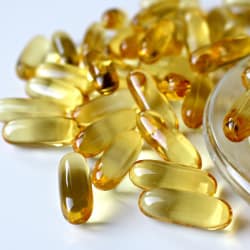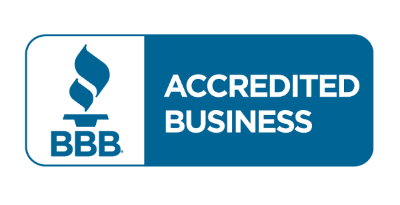
Omega 3, 6, or 9? What Is the Difference?
Nutrition Supplements
There are different types of fats; saturated and unsaturated (which includes monounsaturated and polyunsaturated fats). Essential fatty acids are part of the group of healthy fats, including Omega-3, Omega-6, and Omega-9. What can you eat to enrich your diet in healthy fats? Which fatty acids are the most important? This article will break down the answers to these questions.

Omega 3, 6, or 9? What Is the Difference?
Nutrition Supplements
There are different types of fats; saturated and unsaturated (which includes monounsaturated and polyunsaturated fats). Essential fatty acids are part of the group of healthy fats, including Omega-3, Omega-6, and Omega-9. What can you eat to enrich your diet in healthy fats? Which fatty acids are the most important? This article will break down the answers to these questions.
Fat is an essential element to all healthy diets. We are conditioned to think that fat is bad. But not all fats are bad! We need fat. The body can't make fat itself and needs fat to absorb fat-soluble vitamins A and D.
The amount of fat in the American diet has been steadily increasing since the 1970s. And that's not an increase in healthy fats. It's the saturated fat type found mainly in fried and processed foods, meat, and dairy.
Healthy fats are a vital element of a healthy diet and can help reduce your LDL Cholesterol levels. It can, however, be a little confusing to understand the different types of healthy fats.
What can you eat to enrich your diet in healthy fats? Which fatty acids are the most important? This article will break down the answers to these questions.
What is Monounsaturated Fat?
The chemical structure of different fats is what distinguishes them from one another.
Monounsaturated fats have one double bond. Many foods that have high levels of monounsaturated fats also have many other types of fat present too. Food that is high in monounsaturated fat includes olive oil, avocado, and canola oil.
As a general rule, if food is liquid at room temperature, it is monounsaturated fat. If it is solid at room temperature, it is saturated fat (think butter and coconut oil).
Diets that include healthy levels of monounsaturated fats can be effective for weight loss. Diets low in saturated fat and abundant in monounsaturated fat can also help to reduce inflammation.
Inflammation can be detrimental to our long-term health as it can cause chronic illnesses such as heart disease and cancer.
What is Polyunsaturated Fat?
The chemical structure for polyunsaturated fats is different from monounsaturated fats. The chemical structure affects how the fat is broken down and used in the body.
What does the structure of polyunsaturated fats look like? Two to six double bonds. This makes it hard for extra hydrogen atoms to attach to it, making it unsaturated with hydrogen.
Monounsaturated fats have one double bond (mono), and polyunsaturated fats have more than one bond (poly). Simple!
Polyunsaturated fats are thought to be even more healthy than monounsaturated. They may help reduce the risk of heart disease and assist weight loss when used to replace saturated fats.
You find polyunsaturated fats in vegetable oils and seed oils such as flax oil and soybean oil.
What Are Omegas?
Now we have a bit of clarity on the different types of fat. Let's dig into what omegas are, shall we?
Omegas are essential fatty acids. They are mainly polyunsaturated fats. They are necessary for the body as they are a crucial part of our cell membranes and our development.
We need omega fatty acids for the growth and development of organs like our brain, for example.
The confusing part? There are different types of omegas that are important for varying things. The ratio of different omegas you consume is another crucial factor to pay attention to.
The different omegas require the same enzyme to be digested; this means they can compete when it comes to absorption.
It is essential to get the right balance of omegas for optimal health. You usually require more Omega-3 than Omega-6 or Omega-9.
What is Omega-3?
To make things a little more complex, there are three types of Omega-3. They are:
- Eicosapentaenoic acid (EPA)
- Docosahexaenoic acid (DHA)
- Alpha-linolenic acid (ALA)
EPA and DHA are the marine omegas found in fish.
ALA is found in nuts and vegetable oils. ALA is vital as it can only be obtained by the diet and not made in the body.
EPA and DHA can be made in the body by ALA, but the body is not efficient in making the amount we need. It is better to get them from your diet or a supplement. Check Supplement Relief for an effective supplement.
Why is Omega-3 Important?
Many other types of fat can be produced by the body using additional fat. Our bodies can't make Omega-3, so it is so important to get it from our diets.
The Omega-3 fatty acid is essential for just about everything our body does! It starts with the cell membrane and affects our body's ability to produce hormones. It gives your brain energy, helps to clot blood, and is essential for a healthy cardiovascular system.
Which Foods Contain Omega-3?
The primary source of Omega-3 for humans is seafood. Omega-3 is abundant in oily fish such as salmon, tuna, and mackerel.
Did you know that Omega-3 originally comes from sea algae that the fish eat in the ocean? The fish can't synthesize the Omega-3, and that's why it becomes one of the nutrients we obtain from eating them.
Other foods rich in Omega-3:
- chia seeds
- flax seeds
- eggs
- walnuts
- leafy green vegetables
What Does a Deficiency Cause?
If you have an Omega-3 deficiency, it will likely cause problems with your skin, hair, and nails. A lack can cause brittle hair that breaks easily and the appearance of a flaky scalp or dandruff.
What is Omega-6?
Most Americans have more Omega-6 in their diet than Omega-3. This is because Omega-6 is found in products we regularly consume.
There are two Omega-6 fatty acids which are arachidonic and linoleic acid. Like Omega-3, Omega-6 is polyunsaturated fat and cannot be produced by the body.
Why is Omega-6 Important?
Omega-6 helps lower our LDL cholesterol. LDL is the type of cholesterol we don't want in the body as it lines our arteries with a fatty layer. This can lead to heart disease and strokes.
However, we need to be careful not to consume too much Omega-6 as it can raise our blood pressure. Always try to consume more Omega-3 than Omega-6.
Which Foods Contain Omega-6?
There are many foods we eat daily that contain Omega-6. There are two types of food with Omega-6, those that include linoleic acid:
- vegetable oils such as sunflower oils
- nuts
- seeds such as pumpkin seeds
and those that contain arachidonic acid, which includes food such as:
- eggs
- meat
- poultry
- fish
What Does a Deficiency Cause?
We need Omega-6 for the correct function of our cells. If we don't have enough Omega-6 in our body, it can cause problems. Omega 6 is also thought to be important for our skin health.
What is Omega-9?
A monounsaturated fat, Omega-9, is present mainly in animal and vegetable fats.
Omega-9 can be produced by the body, making it a non-essential fatty acid. This doesn't mean you don't have to consume it. It just means it's slightly less critical than dietary Omega-3 and 6.
Why is Omega-9 Important?
Omega-9 is also known to promote the 'good' HDL cholesterol in the body and reduce LDL cholesterol. Sufficient Omega-9 can also increase our energy levels and boost our mood.
Which Foods Contain Omega-9?
As it is a nonessential fatty acid, you don't need to be so strict about incorporating Omega-9 into your diet. However, some of the foods containing Omega-9 are incredibly healthy. These foods include but aren't limited to:
- almonds
- olive oil
- peanut oil
- avocado oil
What Does a Deficiency Cause?
The body can produce Omega-9 by itself. This makes the chances of a deficiency very rare. If you aren't sure, then speak to your doctor.
What to Remember About Omegas
What should you remember about Omegas? That Omega-3 is the most important and the one you should always aim to get more of in your diet. Omega-3 is the most commonly supplemented as many people don't eat fish.
If you are eating a healthy, balanced diet, then you are probably already getting enough Omega-6. Remember that too much Omega-6 can hinder your absorption of Omega-3.
Omega-9 is the one you don't need to worry too much about, as your body already produces it. Again, if you eat a varied and balanced diet, you will probably be eating foods rich in Omega-9 anyway.
Add Omegas to Your Diet Today
The different types of fats and fatty acids can all be a bit confusing. Foods don't usually contain one kind of fat. They are made up of a combination of saturated, polyunsaturated, and monounsaturated fats.
This article aimed to dispel some of that confusion.
You can also use the suggestions above to start adding more of the foods high in Omegas into your diet. Remember, the Omega you likely lack most is Omega-3.
Do you want to make sure you are consuming an optimal balance of Omegas with a supplement? Consider adding an Omega-3,6,9 supplement to your diet.

Jay Todtenbier is an original founder of SupplementRelief.com in 2010 and has operated the business ever since. He is also a tennis instructor and gospel musician. Formerly he spent 25 years in business development, technology and marketing with startups and major corporations having gone through the tech boom in Silicon Valley in the 90s. He became passionate about, and began studying and practicing Wellness as a Lifestyle after experiencing chronic, personal health challenges including depression, auto-immune disorders, and being overweight that impacted his ability to live a healthy, vibrant life. Since then, he has been an advocate for healthier living encouraging others to live better through making small, gradual changes to lifestyle behaviors relating to whole-foods nutrition, stress management, reasonable exercise, proper sleep, and the use of targeted, high-quality supplements.
Learn more about Jay Todtenbier.
-
 Discussion Forum
Questions or Feedback?
Discussion Forum
Questions or Feedback?Ask questions. Share your thoughts. Note that we cannot answer questions relating to specific medical conditions - please refer those to your qualified healthcare provider.
Post a new Comment or Reply to an existing one. Help for using the Discussion Forum.
 Discussion Forum Help
Discussion Forum Help
Comments are displayed in order of the last one posted so the most recent one is at the top and the oldest one at the bottom.
Replies within a Comment are displayed in reverse order with the oldest one at the top and the most recent one at the bottom.
Each post identifies
 who made the post and the
who made the post and the  date and time the post was made.
date and time the post was made.Mouse over the icons for tooltips that explain what they mean.

If you see this icon you can attach an Audio file to your post.

If you see this icon you can attach a Document file to your post.

If you see this icon you can attach an Image file to your post.

If you see this icon you can attach a Video file to your post.
You will see the
 Ban icon (Report Post as SPAM) immediately following the Timestamp of the post. Click this icon if you feel strongly that the content posted is not appropriate and should be reviewed by the Forum Moderator. You will be provided with a confirmation dialog to be sure you wish to submit this post for review. If submitted, the Forum Moderator will be notified to review the post and will determine what type of action to take.
Ban icon (Report Post as SPAM) immediately following the Timestamp of the post. Click this icon if you feel strongly that the content posted is not appropriate and should be reviewed by the Forum Moderator. You will be provided with a confirmation dialog to be sure you wish to submit this post for review. If submitted, the Forum Moderator will be notified to review the post and will determine what type of action to take.Click
 in the upper right corner of this Help modal or anywhere on the web page outside of the modal to exit Help.
in the upper right corner of this Help modal or anywhere on the web page outside of the modal to exit Help.
![]() Session Expired from Inactivity
Session Expired from Inactivity
Do you want to?
9618 Jefferson Highway, Suite D-191
Baton Rouge LA 70809-9636
(888) 424-0032 |
support@supplementrelief.com
* Disclaimer: This page is available exclusively for SupplementRelief.com clients. None of the information on this website is intended to replace your relationship with your healthcare provider(s). Nothing should be considered medical advice. The information, knowledge, and experience shared on this website are the opinions of SupplementRelief.com. This site and its content are intended to enhance your knowledge base as YOU MAKE YOUR OWN HEALTHCARE DECISIONS in partnership with your qualified health professional.
* These statements have not been evaluated by the Food and Drug Administration. These products and services are not intended to diagnose, treat, cure, or prevent disease.
* There is NO GUARANTEE OF SPECIFIC RESULTS for the products or services offered, and the RESULTS CAN VARY for each individual. Any results claimed by our customers are based on individual experiences that are unique and cannot be guaranteed.
FirstFitness Nutrition and NuMedica may be promoted and sold on the internet ONLY by Authorized Resellers who have been approved by and have registered their website domain with these companies. They strictly prohibit, and actively monitor, the UNAUTHORIZED SALE or RESALE of their products in ALL online public shopping portals including Amazon, eBay, and others and into other countries. All products purchased in SupplementRelief.com are for PERSONAL USE ONLY and CANNOT BE RESOLD to others. Please report violations of Reseller Policy directly to FirstFitness Nutrition at 800.621.4348 and to NuMedica at 800.869.8100.
The content and photographs on this website are copyrighted or Licensed Material and may not be downloaded for other than personal use. Republication, retransmission, reproduction, or any other use of the content or photographs is prohibited. ©2010-2024 SupplementRelief.com.
Are you sure you want to remove this item?

